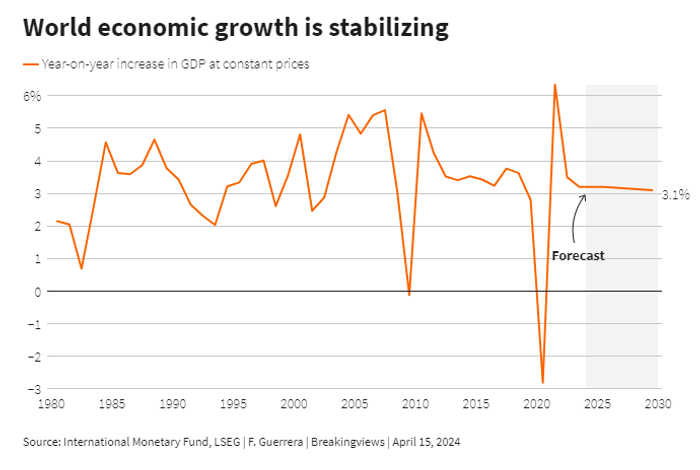Published 21:47 IST, April 16th 2024
Austerity is a bad economic answer at a worse time
Global GDP will expand by 3.2% this year and the next, the Fund's World Economic Outlook says.
Advertisement
Double take. The guardians of economic orthodoxy at the International Monetary Fund have something for everyone in their latest set of projections. Optimists can revel in the forecast of continued near-term global growth. Pessimists will find plenty to be gloomy about in a diminished long-term outlook. Neither group, though, ought to agree with the IMF’s familiar prescription for policymakers: budgetary austerity and high interest rates.
Global GDP will expand by 3.2% this year and the next, after rising by a cumulative 6.7% in 2022 and 2023, the Fund's World Economic Outlook says. With inflation down sharply from its 2022 peak in most advanced countries, that would mean the global economy has banished the specter of 1970s-style flat growth and spiraling prices.
Advertisement
But look further out, and the IMF reckons that growth will remain well below the 3.8% pace averaged between 2000 and 2019. Slowing growth is a brutal prognosis for governments facing the fiscal burdens of providing for a growing number of retirees or transitioning to clean energy.

The natural conclusion, which the Fund endorses, might be that a round of belt-tightening is due. But the recent past offers an illuminating lesson. Since late 2022, the U.S. has provided 2% of GDP more government stimulus than the IMF expected, while the euro zone only added 0.2%. Unsurprisingly, growth favored the big spenders, with U.S. GDP’s 2.5% expansion vastly outpacing Europe’s 0.4% last year.
Advertisement
That’s not to say that ultra-loose fiscal policy is a panacea, and the U.S. budget deficit of around 7% of GDP has worryingly more than doubled in ten years. But by the IMF’s own calculations, planned budget adjustments will keep debt-to-GDP ratios stable in many advanced economies, including the United States. And if central banks ignore the Fund’s caution on lowering rates, the cost of servicing that debt will fall, too.
Further cutbacks could imperil near-term policy goals - like President Joe Biden’s push to counter China’s rising share of global industry or electrify transportation - for an unclear payoff. Governments are facing vast challenges in the years ahead. It’s hard to see how a plunge into the cold pool of austerity would reinvigorate attempts to tackle them.
Advertisement
21:47 IST, April 16th 2024
